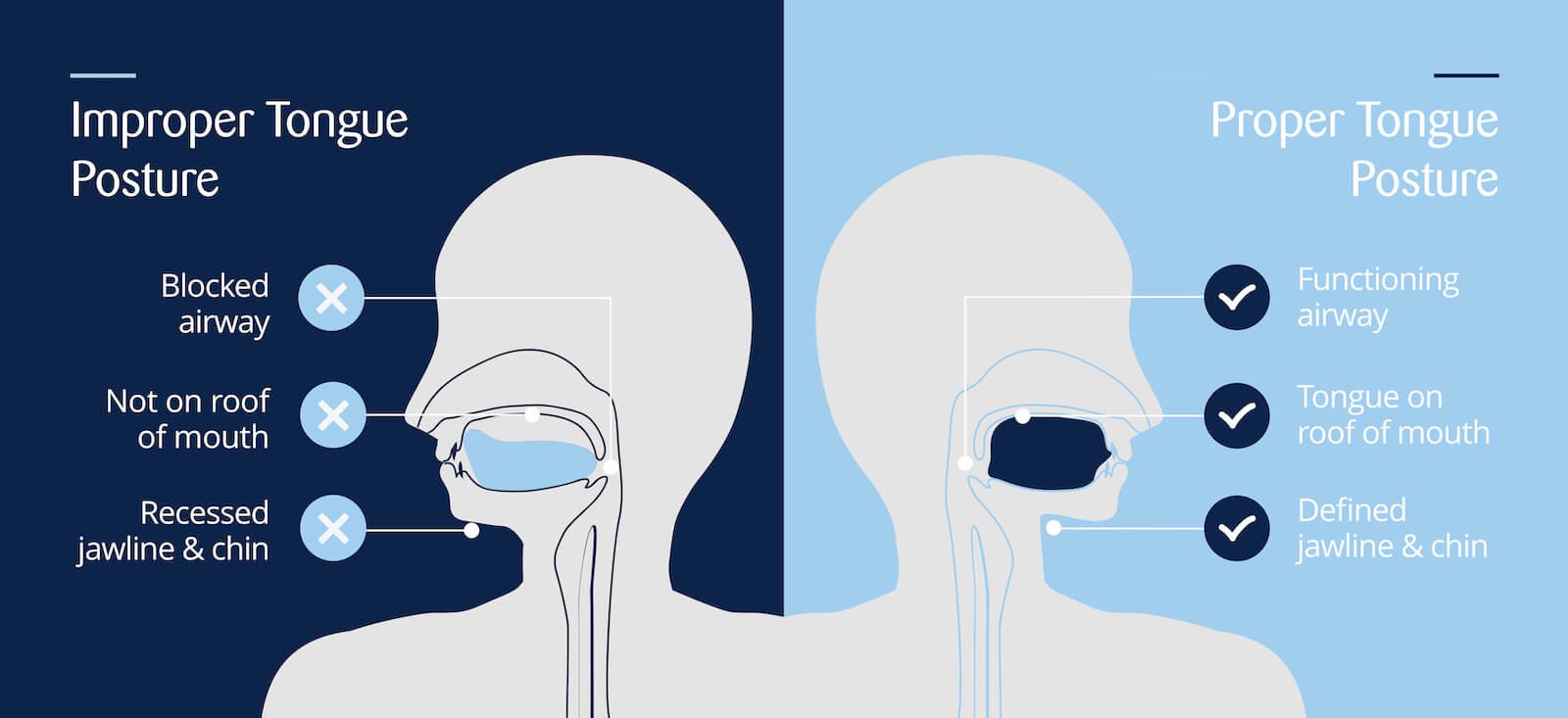What is a tongue tie and how does it affect function?
11/30/23
Tongue tie (anklyoglossia) is a condition, present at birth - that restricts the tongue’s range of motion. With tongue tie, an unusually short, thick or tight band of tissue (lingual frenulum) tethers to the floor of the mouth at various points under the tongue. (Mayo Clinic, 2016).
Tongue/lip ties (tethered oral tissues, or “TOTs) develop in gestation and are an embryologic malformation based on genetics - affecting the multimusculature midline organ of your body (the tongue!). We can not prevent tongue ties in pregnancy.
Our tongues are responsible for forming our head shape, palate shape, mouth, jaw and airway. The tongue is meant to sit at the roof of our mouths. When our tongues are tethered to the bottom of our mouth through restricted frena and tight fascia, we are not able to fully elevate our tongues to rest on the roof or have optimal movement/strength.
Tongue restrictions cause restrictions and tension throughout our mouth, face, neck and entire body. This restriction can thus cause asymmetry of our mouth, face, head and body. Whole body asymmetry can be responsible for feeding difficulties at the breast or bottle, head shape concerns (brachicephaly, plagiocephaly and scaphocephaly), torticollis, etc
When the tongue is able to rest on the roof of the mouth, we allow for better facial growth, upper airway growth, autonomic regulation, and improved feeding/swallowing. Sensory input into the roof of our mouth activates our vagus nerve and puts us in a parasympathetic state (“rest and digest”). This makes us calm, regulated and happy. This is often why a pacifier or thumb sucking becomes problematic, as it is replacing what the tongue is supposed to be doing!
The tongue is connected to your entire body through the fascia! Restrictions in the tongue can cause deep, fascial restrictions from your tongue, through your neck, core, down to your hips and toes.
How do tongue ties affect us functionally?
As babies, we see the most trouble with breast/bottle feeding;
Persistent shallow latch / difficulty latching / inability to latch
Clicking, chomping, slurping, popping on and off the breast
Spilling milk out of the sides of the mouth
Swallowing air during feeding (gulping, gas, reflux)
Poor stamina (takes a long time to feed, tires easily while feeding, falls asleep often while feeding)
Milk tongue (often misdiagnosed with thrush)
Low weight gain or weight gain that declines after 12 weeks
Blisters on lip
As mothers of a tongue tied infant, we will see issues with the following:
Cracked/bleeding/blistered nipples due to a painful latch
Frequent clogged milk ducts/mastitis
In children, we will often see issues in feeding, speech and sleep;
Gagging while eating (gagging is normal in the first few months of solids)
Pickiness about texture
Messy eating habits
Immature chewing patterns
Tongue thrust
Aspiration
Choking easily
Difficulty with certain speech sounds, fatigue while speaking, increased errors with quicker talking
Sleep Disordered breathing
Dental issues (crowding/cavities)
Gastrointestinal health
Ear infections due to improper swallowing and restricted fascia in the neck/facial area
Underdeveloped cranial, facial and jaw growth
We can see that a tight, restricted string under our tongues can cause so many issues! It is truly so important to address these issues in our children to set them up for a lifetime of health and wellness. The later you treat tongue ties, the longer you will be treating the functional deficits and compensations caused FROM the tongue tie. For example, treating oral dysfunction in an infant takes less time, as they have had a shorter life span of compensations, their bones are soft and malleable, and we can see quicker results depending on the severity. When treating a child with a tongue tie, you are not just dealing with the feeding issues. You are now needing to treat the sleep issues, the behavioral issues due to poor sleep, the high and narrow palate, the enlarged tonsils and adenoids, teeth crowding and cavities, ear infections from improper swallow, the poor tongue strength, tone and range of motion, and finally the cranial and airway growth.



